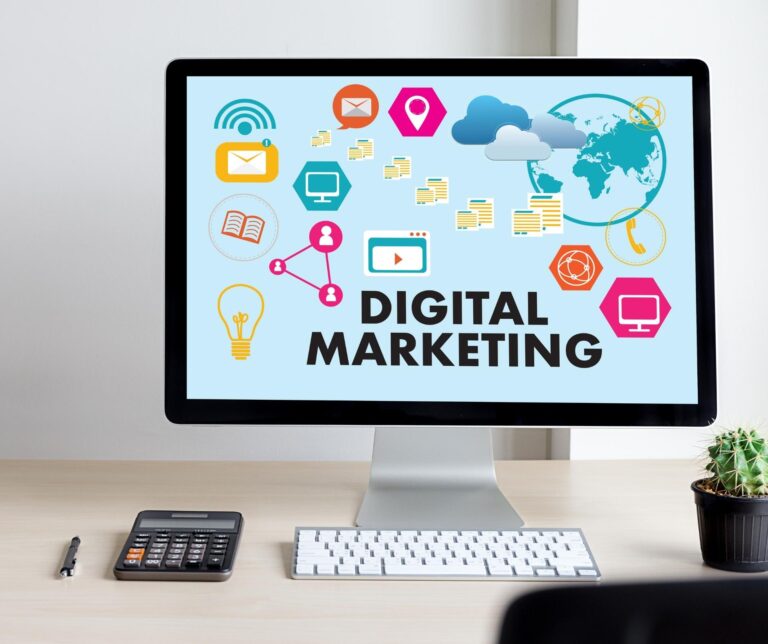Quality Content or Just More Noise: The 2025 Guide to Creating Content That Converts
Creating content is easy. Creating quality content that actually converts is where most businesses struggle.
Every day, millions of pieces of content flood social media feeds, blog platforms, and email inboxes. Your ideal clients are drowning in information, and most of it is just noise—generic advice, regurgitated tips, and content created to check a box rather than deliver value.
So how do you know if your content is quality or just adding to the noise?
In this guide, you’ll discover the exact framework successful entrepreneurs use to create content that stands out, builds authority, and brings in 3-7 clients per month consistently.

The Real Difference Between Quality Content and Digital Noise
Quality content isn’t about perfection—it’s about purpose and precision.
Quality content is:
- Strategically crafted with your ideal client’s pain points in mind
- Backed by real experience, data, or unique insights
- Actionable and specific, not vague and inspirational
- Designed to move your audience toward a clear outcome
- Consistent with your brand voice and positioning
Noise content is:
- Generic advice anyone could Google in 30 seconds
- Created just to “post something” without strategy
- Filled with buzzwords but lacking substance
- Focused on vanity metrics instead of business outcomes
- Inconsistent in quality, messaging, or frequency
The fastest way to identify noise in your own content? Ask yourself: “Could my competitor post this exact same thing?” If yes, it’s noise.
Why Quality Content Matters More Than Ever in 2025
The digital landscape has shifted dramatically. Algorithm changes across every platform now prioritize engagement quality over quantity, and your audience has become incredibly selective about what they consume.
Here’s what this means for your business:
Visibility is earned, not bought. Platforms reward content that keeps people engaged. One high-quality post that sparks meaningful conversation will outperform ten generic posts every single time.
Trust is the new currency. Your audience doesn’t need more information—they need someone who understands their specific challenges and can guide them toward solutions. Quality content builds that trust.
Differentiation drives sales. In saturated markets, your content is often the first impression potential clients have of your expertise. Generic content positions you as generic. Strategic, insightful content positions you as the expert.
For service-based businesses and coaches, quality content isn’t just marketing—it’s your sales team working 24/7.

There’s a lot of noise out there and it can be tough to stand out. But by creating quality content, paying attention to detail, and valuing your audience’s time, you can increase your chances of being heard. And once you start seeing results from your digital marketing campaigns, don’t forget to keep testing and optimizing! The landscape is always changing, and what works today might not work tomorrow. So stay ahead of the curve by continually tweaking and experimenting with your strategy. If you need help getting started or want someone to look at your current campaigns, we are here for you. Shoot us an email or give us a call—we’d love to chat about how we can help get your social media seen and heard in the cacophony of today’s online world.
The 5-Step Framework for Creating Quality Content That Converts
Step 1: Start With Strategy, Not Inspiration
Stop asking “What should I post today?” and start asking “What does my ideal client need to believe, understand, or do before they’re ready to work with me?”
Map your content to your client journey:
- Awareness stage: Address the problems they’re experiencing
- Consideration stage: Show them what’s possible and position your approach
- Decision stage: Overcome objections and demonstrate your unique value
Every piece of content should have a clear purpose in moving someone through this journey.
Step 2: Add Your Unique Perspective
Quality content doesn’t mean reinventing the wheel—it means adding your unique angle that no one else can replicate.
Your unique perspective comes from:
- Your specific client success stories and case studies
- Your industry experience and hard-won lessons
- Your signature frameworks or methodologies
- Your contrarian opinions on common industry advice
- Your personal story and why you do this work
If you’re a veteran entrepreneur, lean into that military precision and strategic thinking. If you’ve overcome specific business challenges, share those battle scars. Your story is your differentiation.
Step 3: Make It Actionable and Specific
Vague advice like “just be consistent” or “provide value” is noise. Quality content gives your audience something they can implement immediately.
Instead of: “Build better systems in your business,” Try: “The 3-step client onboarding system that reduced my admin time by 12 hours per week—here’s exactly how to set it up.”
Include:
- Specific numbers and data points
- Step-by-step processes
- Real examples (yours or your clients’)
- Clear next steps
Step 4: Optimize for Both Humans and Algorithms
Quality content serves your audience first, but smart formatting helps it get seen.
For readability:
- Use short paragraphs (2-3 sentences max)
- Include subheadings every 200-300 words
- Bold key takeaways and important points
- Add white space for easy scanning
- Use bullet points and numbered lists
For SEO:
- Include your target keyword in the first 100 words
- Use keyword variations naturally throughout
- Add internal links to related content
- Include external links to authoritative sources
- Optimize meta descriptions and title tags
- Use descriptive alt text for images
Step 5: Design for Engagement and Conversion
Every piece of content should have a clear call-to-action that moves people toward the next step.
Strong CTAs include:
- “Download our [specific resource] to get [specific outcome]”
- “Book a clarity call to get your customized [specific plan]”
- “Join [number] entrepreneurs who are already [specific result]”
- “Comment below with [specific question] and I’ll personally respond”
Make your CTA relevant to the content topic and aligned with where they are in the client journey.
How to Measure If Your Content Is Actually Working
Vanity metrics like likes and followers don’t pay the bills. Here’s what actually matters:
Leading indicators (what to track weekly):
- Engagement rate (comments, shares, saves vs. total reach)
- Click-through rate on your CTAs
- Profile visits and website traffic from content
- Direct messages and conversation starters
- Content saves (indicates long-term value)
Lagging indicators (what to track monthly):
- New leads generated from content
- Discovery calls booked
- Email list growth
- Client conversions attributed to content
- Revenue from content-driven clients
Use platform analytics, Google Analytics, and your CRM to connect the dots between content performance and business results.
If your content isn’t driving measurable business outcomes within 60-90 days, it’s time to audit your strategy.
The Testing and Optimization Cycle That Separates Winners from Everyone Else
Platform algorithms change constantly. What worked six months ago might be dead in the water today. The businesses that win are the ones who test, measure, and optimize relentlessly.
Your 30-day testing cycle:
Week 1-2: Test 3-5 different content formats (carousel posts, video, stories, long-form text, etc.) with similar topics Week 3: Analyze which format drove the best engagement and business results Week 4: Double down on the winning format while testing variations in messaging, hooks, or CTAs
Key variables to test:
- Content format (video vs. text vs. image)
- Hook style (question vs. statement vs. story)
- Post length (short-form vs. long-form)
- CTA placement (beginning vs. end)
- Publishing times and days
- Topic angles and approaches
Document your results and build a content playbook based on what actually performs for your specific audience.
Common Quality Content Mistakes (And How to Fix Them)
Mistake #1: Posting for the sake of posting Fix: Create a content calendar aligned with business goals, not just consistency goals.
Mistake #2: Talking about yourself instead of your client Fix: Every piece of content should answer “What’s in it for them?”
Mistake #3: Being too broad or generic Fix: Narrow your focus to a specific pain point, outcome, or audience segment.
Mistake #4: Ignoring the data Fix: Review analytics monthly and kill content that doesn’t perform.
Mistake #5: Not repurposing high-performing content Fix: Turn your best posts into blog articles, email sequences, lead magnets, and offers.
Your Next Steps: From Noise to Notable
If your content has been falling flat, here’s your action plan:
- Audit your last 10 posts using the quality vs. noise framework above
- Identify your 3 highest-performing pieces and analyze what made them work
- Create a content strategy document that outlines your client journey and content themes
- Develop 2-3 signature topics or frameworks that showcase your unique expertise
- Set up tracking systems to measure business outcomes, not just engagement
- Test one new content format this week and measure the results
Remember: You don’t need to post more. You need to post smarter.
Quality content takes more time and strategy upfront, but it delivers exponential returns. One piece of strategic, high-quality content will generate more leads and clients than 50 mediocre posts.
Ready to Stop Creating Noise and Start Generating Clients?
At DeBella DeBall Designs, we help female entrepreneurs and veteran business owners build content systems that consistently bring in 3-7 clients per month—without the burnout of posting daily or chasing every trend.
Our Operation Six-Figure program gives you the exact frameworks, templates, and strategic guidance to turn your content into a client acquisition machine.
Book a free clarity call and we’ll show you exactly where your content strategy is falling short and the fastest path to turning it around.
[Schedule Your Clarity Call Today →]
Because your expertise deserves to be seen, heard, and paid for.
Explore Coaching with Lisa Benson
Book a Clarity Call
Start with the 9-Line Business Roadmap






